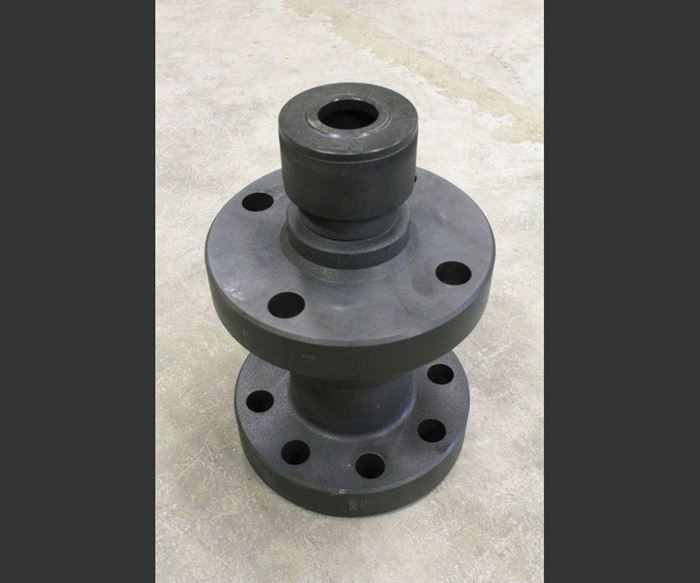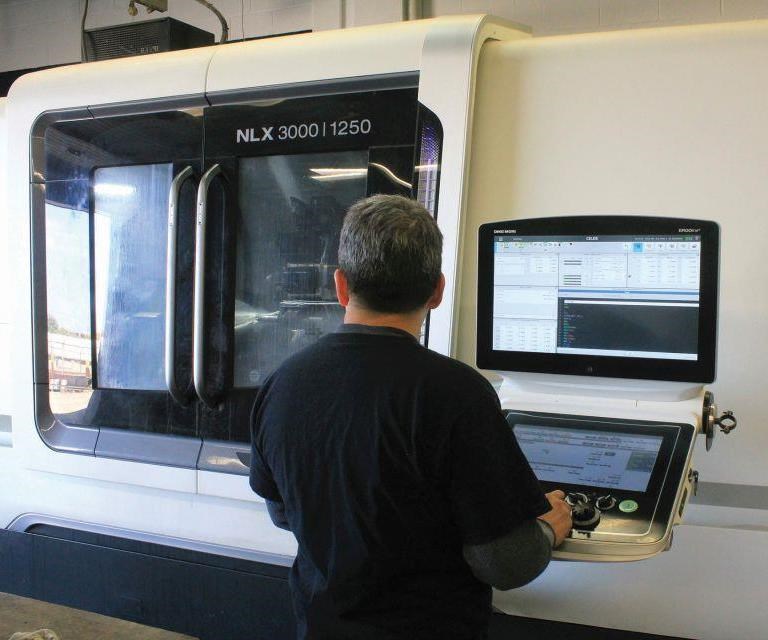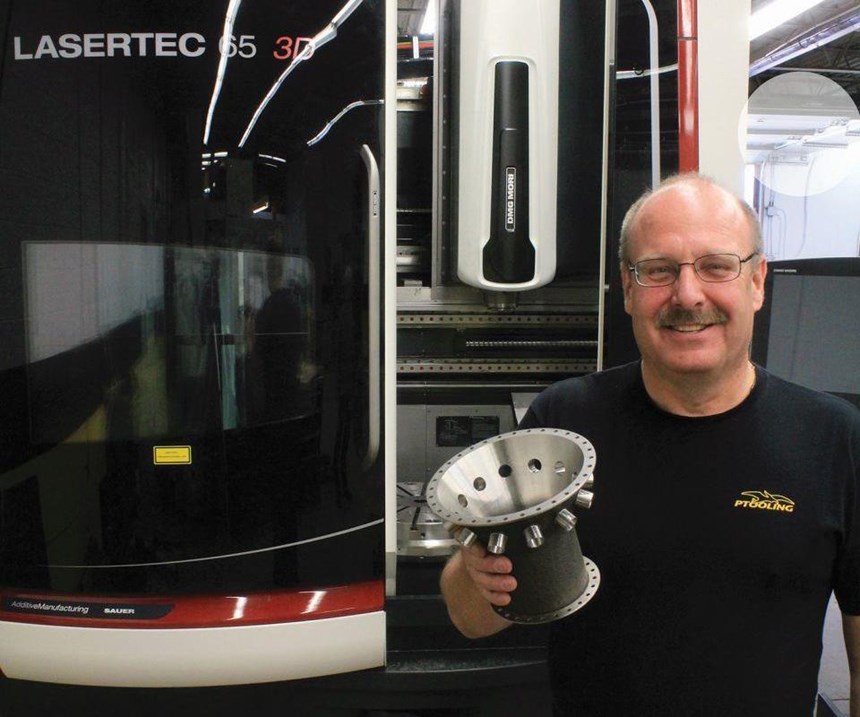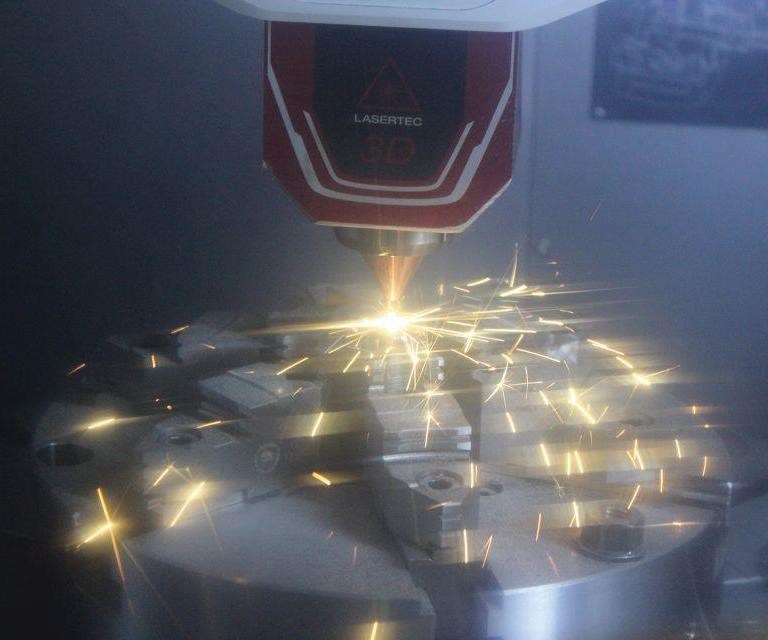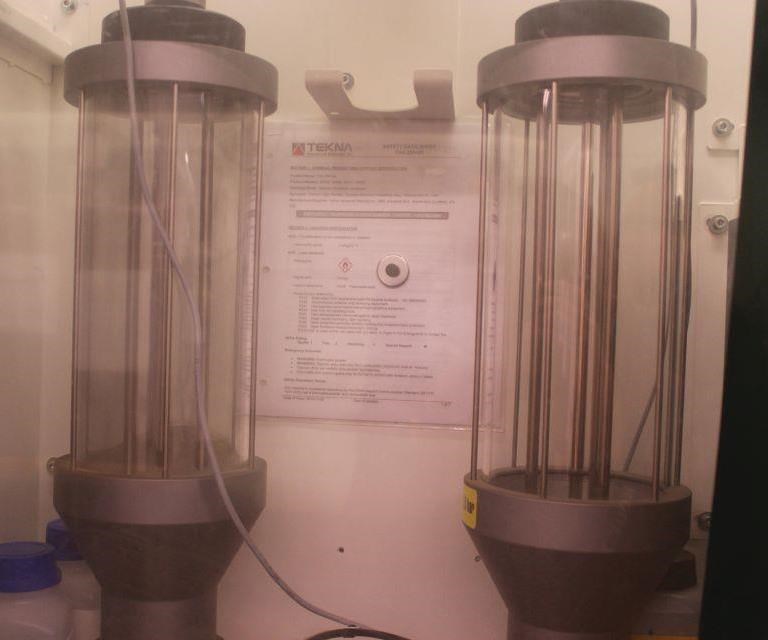Chances for Hybrid Manufacturing in Oilfield Applications
A contract manufacturer is finding uses for a hybrid additive manufacturing and five-axis milling machine for oilfield drills, valves and other end-use components.
Share



PTooling, a Canadian contract manufacturer located in Amherstburg, Ontario, is used to the ebbs and flows of the oilfield sector. The family-owned company, in operation since 1999, routinely machines valve sleeves, latch components and drill bits for oilfield operations on its DMG MORI lathes and Tongtai VMC. Production volume is unpredictable, fluctuating with market demand, and recently that demand has been low.
To remain flexible and survive in a volatile industry, the company has had to find ways to differentiate itself from other “mom and pop” shops in its space. Setting itself apart has frequently meant investing in technology, such as a CMM purchased in 2008 to help the shop boost its quality department and its competitiveness during the economic downturn. When the Canadian oilfield industry began to slump again mid-2014, the company began to look toward additive manufacturing (AM) as its next move. In October 2015, it became the first contract manufacturer in North America to purchase and install a Lasertec 65 3D system from DMG MORI, a hybrid machine tool combining five-axis milling with a laser-deposition head.
Marv Fiebig, the company’s president, says that part of the motivation behind this machine purchase was diversification. The capacity has allowed PTooling to branch out into injection molding, die casting and aerospace applications since acquiring the machine.
However, the hybrid has also strengthened PTooling’s position in the oilfield industry, both with its existing customers and new prospects. Mr. Fiebig recently discussed some of the opportunities that PTooling sees for hybrid manufacturing in oilfield machining. The advantages in this sector include:
More flexible production. PTooling chose to purchase a hybrid system rather than a dedicated additive manufacturing machine in part because of the hybrid system’s machining capacity. The system is built on a five-axis milling machine platform, offering 10,000 rpm or 18,000 rpm as an option. (PTooling has the higher-speed model, plus an optional 1,000-rpm turning table for full turning capability.) Workpieces as large as 23.6 inches wide and 15.7 inches high and weighing more than 1,300 pounds can be accommodated within its work envelope.
With dimensions and capabilities comparable to a dedicated machining center, the hybrid enables PTooling to machine its oilfield parts as aggressively as it would in its VMC or turning centers. In fact, the company sometimes uses the hybrid as a spare machining center if there is no additive manufacturing work to be done, meaning it rarely sits idle.
Fewer setups. While the machine can function as a mill or a laser deposition system alone, it also offers the ability to use both capabilities on the same part, even in alternation with each other. Parts can be machined in between additive passes, and finished to come off the machine complete. In addition, the ability to perform five-axis milling in conjunction with additive opens up the possibilities for hollow features and other complex geometries that could ultimately improve the performance of oilfield components.
Switching between milling and additive manufacturing operations is simple. The additive head uses a standard HSK-A 63 spindle interface, and rests off to the side in the build chamber when not in use. Because the powder is fed into the machine as needed, not much cleanup is necessary following laser deposition, Mr. Fiebig says.
Reduced waste. The additive capability is powered by a 2.5-kW laser mounted on a head that delivers metal powder from a hopper into the path of the beam. The powder is melted and essentially welded onto the layer below it, enabling the building of an entire part in layers or of features onto an existing workpiece. In the latter case, machining can begin on a block of material smaller than the finished part and extending features can be added via laser deposition. The result can be less material usage overall, reducing costs compared to traditional machining.
In addition, this powder-fed approach can also reduce material use and cost over other types of additive manufacturing. A typical metal AM system holds parts in a bed of metal powder as they are built; excess powder must be carefully removed from the build chamber to be recycled. By instead feeding the powder directly to the laser as needed, the Lasertec 65 3D uses powder more efficiently. Meanwhile, the ability to orient the part in five axes saves on powder as well, because it reduces the need for sacrificial support structures that are typical of other AM technologies.
Combined materials. Oilfield drills and their components are exposed to high levels of abrasion, sour gas, fracking fluids and other corrosive agents in the field. The tough materials that can stand up to these conditions, such as Inconel and carbide, tend to be expensive.
PTooling sees a way to mitigate the cost using its Lasertec 65 3D, which enables cladding one material onto another. Rather than machining a part such as an oilfield drill complete out of an expensive material, it is possible with the hybrid to machine (or even additively grow) the bulk of the component from a cheaper material such as steel, and then laser-clad the exotic metal just on the surfaces that will be exposed to abrasion or corrosive influences, reducing the cost and amount of expensive materials needed.
“That could mean up to 80 percent savings on the cost of a part just in the cost of the material if we’re able to use a conventional steel and cover and protect it through cladding,” says Mr. Fiebig.
Improved design. Operating an oilfield drill is expensive, and it can take many hours to remove the bit from the well each time it must be changed. PTooling sees hybrid manufacturing as a way to help improve the performance of oilfield components like this through new designs.
“When they have to pull up a drill string that’s maybe 6,000 feet under the ground, it might take 8 hours,” says Mr. Fiebig. “If they have to do that once every 2 hours (only getting 2 hours of life out of a tool) they’re spending more time tripping it in and out of the hole than actually working the tool.” As a result, he says, “If they can get a tool that lasts 20 hours, that saves days.”
While convincing customers to redesign their parts for hybrid production is a costly proposition, the productivity gained is potentially enough to outweigh it. According to Mr. Fiebig, comparing the cost of a traditionally manufactured drill to one designed for and produced with a hybrid process is the wrong way to think about it. The AM drill bit is going to cost more to develop up front, but a boost in productivity and service life could offset the cost in a very short period of time.
What a better, hybrid manufactured drill bit might look like is not something PTooling can share at the moment, but the company is actively working with customers to develop designs and has submitted a patent application for one drill already. Mr. Fiebig says he sees similar opportunities for redesign through hybrid manufacturing in other oilfield parts such as above-ground wellhead components and valves.
Related Content
Ballbar Testing Benefits Low-Volume Manufacturing
Thanks to ballbar testing with a Renishaw QC20-W, the Autodesk Technology Centers now have more confidence in their machine tools.
Read MoreA History of Precision: The Invention and Evolution of Swiss-Style Machining
In the late 1800s, a new technology — Swiss-type machines — emerged to serve Switzerland’s growing watchmaking industry. Today, Swiss-machined parts are ubiquitous, and there’s a good reason for that: No other machining technology can produce tiny, complex components more efficiently or at higher quality.
Read MoreHow to Successfully Adopt Five-Axis Machining
While there are many changes to adopt when moving to five-axis, they all compliment the overall goal of better parts through less operations.
Read MoreHow to Determine the Currently Active Work Offset Number
Determining the currently active work offset number is practical when the program zero point is changing between workpieces in a production run.
Read MoreRead Next
OEM Tour Video: Lean Manufacturing for Measurement and Metrology
How can a facility that requires manual work for some long-standing parts be made more efficient? Join us as we look inside The L. S. Starrett Company’s headquarters in Athol, Massachusetts, and see how this long-established OEM is updating its processes.
Read More
.jpg;width=70;height=70;mode=crop)
